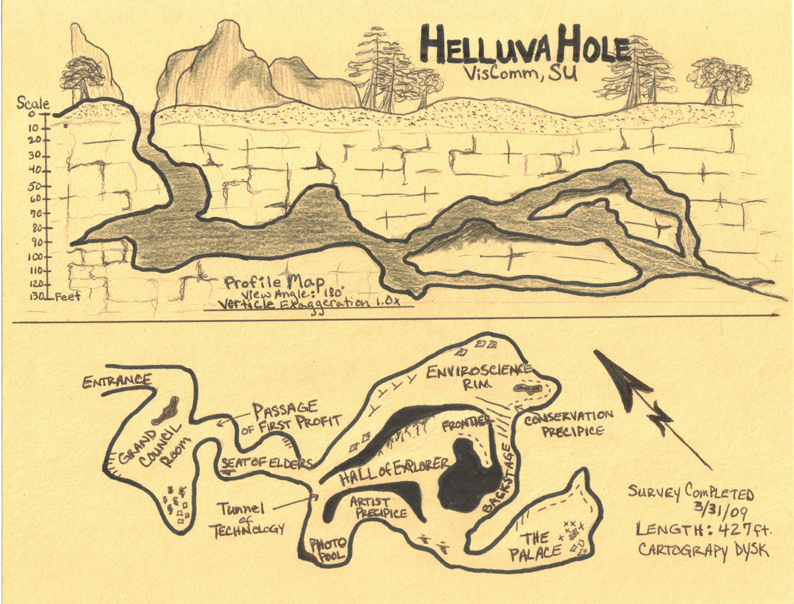 |
Click to start your descent. . .
Helluva Hole:
Commercializing Resistances in the
Cavernous World of Speleology
by Dyana Shearer Kenison
"From prehistoric times to present, caves have represented a mysterious world--a world of the unknown, a world of darkness ... Caves were a mystery, and their darkness raised questions about life and death ... It is fairly easy to understand why humans assigned so much importance to the mysterious dark places" (Pittman 1999, preface). From earliest times, man has had a fascination with caves. Caverns have been searched out, utilized as homes, Indian councils, hideouts, gravesites, dancehalls and distilleries. Their extremities have been mapped, their geological resources mined and their lore contributed to the fabric of modern man's knowledge of the earth and man's place in it. An entire culture of outdoor recreation has embedded itself in the limestone, lava and bedrock of many caves across many continents. Particularly in America in the last century, as knowledge of previously unknown caves has surfaced, efforts to commercialize and commodify the cavern experience have resulted in a broad tourism industry intent on availing itself of those individuals interested in communing with the underground world's virgin majesty.
In his discussion of the Great Outdoors--undeveloped, unaltered wilderness environments--Martin (2004, 517) invokes Roosevelt's reminder "that such pristine places have a universal allure and are a cherished part of U.S. history." The number of caves in the U.S. that have been opened to the public, incorporated as national parklands and even pronounced World Heritage Sites such as Carlsbad Caverns National Park in New Mexico, confirm this notion. A close, interdisciplinary discursive analysis of the way in which commercialized caves display their natural wonders, produce and are produced by specifically subjectified tourists, and contribute to cultural capital exposes three prominent, intertextual themes: the advancement of knowledge through science, civic edification through the aesthetics of art and community solidification through participatory identification with neo-colonialist exploration and discovery. Additonally, it can be argued that showcaves commercialize oppositional practices of resistance through the negotiation of each of these areas in the interest of expanding their marketability to a more dynamic post-modern tourist.
 |
Click to start your descent. . .
a class taught by Bob Bednar in the Communication Studies Department at Southwestern University